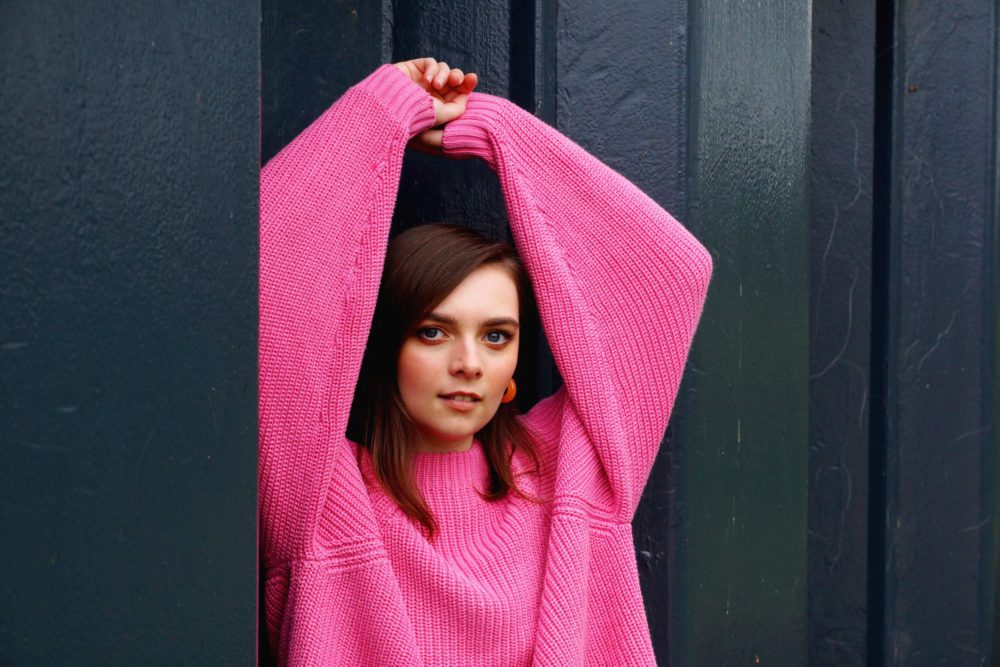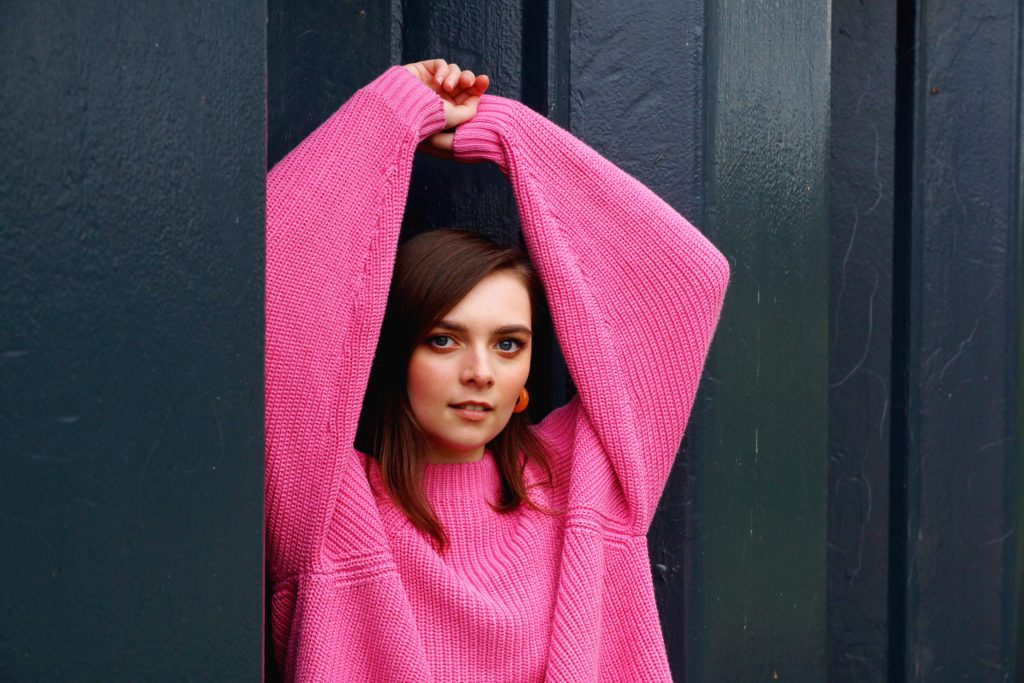PREMIERE: Jodie Nicholson Expands Sonic & Visual Horizons With “Move”


The landscape of the music industry has always been precarious, particularly for emerging artists, in large part because so much of the promotional legwork falls on the musicians themselves, from touring, to selling merch, to shooting music videos. The pandemic has made all of the above that much harder; live performances are sidelined around the globe and dreaming up a concept for a visual that can be shot safely on a shoestring budget requires a good deal of ingenuity. Luckily, British singer-songwriter Jodie Nicholson has plenty, and with a little support from the PRS Foundation’s Women Make Music, and a Help Musicians UK “Do It Differently” Award, she’s created an eye-popping clip for her latest single “Move,” the track itself inadvertently awakening nostalgia for spontaneously getting lost in the music, out on a dance floor.
“Move” is an ode to impulsivity, of going with the flow and riding the metaphorical wave. “This is now a symbol for taking a feeling and running with it and embracing being in the moment with it as well as seeing what happens,” Nicholson explains. “I think that’s why it’s such an uplifting and carefree track.”
It’s fitting that a song rooted in physical and mental freedom was created in a similar state of mind. “‘Move’ is one of those songs where the base of it happened really quickly and I just went with a feeling and ran with it,” Nicholson says. “I started playing a few chords, recorded it as a very, very rough demo and then I just gradually built it up. The lyrics came quite quickly.”
With its minimalist electronic backdrop, “Move” is a marked departure from Nicholson’s tender, folksy 2019 debut Golden Hour. Its trance-like lyrics, slick production, and slow atmospheric build demonstrate Nicholson’s surprising confidence as she pushes her creative boundaries. Over a softly droning synth, the urgent repetition of the lyrics “Feel the rhythm/Move with the rhythm” ushers in a euphoric recollection of what it’s like to be swept away by an irresistible urge: “And I feel the sound of the drums kicking in and I breathe in…”
In the video, Nicholson builds on this sensation by incorporating animations that she and her sister Sally created, utilising bold geometric shapes, a variety of transitions, and lyrics that alter in color, pattern and movement. “I’ve never animated before so it was quite ambitious. Sally showed me the ropes, and I don’t know what I would have done without YoubTube – it’s helped me a lot!” Nicholson admits, although her background in print and textile studies is apparent from the design and color choices she makes. “I just wanted to really play on how colourful and playful the track was and ultimately do something completely different that represented the sounds,” she says. Projected onto Nicholson and the empty wall behind her, the visual elements respond in sync with the track; Nicholson herself moves as though in slow-motion, or sometimes not at all, letting the colors and shapes wash over her.
Hailing from the outskirts of Darlington in Northeast England, a career in music always remained a deep-rooted notion in the back Nicholson’s mind. Her father began taking her round to open mic nights at their local pub, which helped grow Nicholson’s confidence in performing. “It was genuinely terrifying and the pub wasn’t that big!” she recalls. “But that became my home almost – we went often and I started playing in other pubs and restaurants.” Golden Hour compiled songs she’d written at various points in her life – it received rave reviews from the likes of veteran UK radio DJ Jo Whiley, and was featured on national radio stations such as BBC Radio 2 and BBC Radio 6 Music (the latter of which is regarded as the go-to radio station for the discerning listener).
But the funding Nicholson received from Help Musicians UK allowed her to take her work in a totally new direction. Assessed by a panel of experts and longstanding figures within the UK music industry, each recipient receives funding and training in everything from producing to advertising. Discussing how the programme works, Nicholson mentions that validation from music industry professionals had a huge impact. “It gave me the confidence in this track,” she says. “For a complete panel of strangers, all well-established in the industry, to turn around and say ‘Yes, we believe in you as an artist and we believe in this track’… it was a real game changer.”
The opportunity also allowed her to create “Move” with some of the industry’s finest, such as Tim Bran, a regular collaborator with the likes of London Grammar, Birdy and Halsey. “It was phenomenal working with him. I’d never worked with a producer before and it just elevates [the project] when you have somebody on board who just really understands the vision and knows how to execute it,” says Nicholson.
Support received from outside organisations has become even more crucial to help protect an industry that the British Isles thrives on more than it realises. “It’s so important that we keep it alive, including all the grassroots venues that are crucial to people’s careers starting up,” Nicholson urges. “I don’t know what our country would do without live music and artists in general. It’s such an integral part of our culture.”
There’s no denying that “Move” is an intoxicating plea for the continued existence of music in our lives – what it makes us feel, the freedom it gives us. With Golden Hour, Nicholson was looking at how her expression took form; now she uses “Move” to test the limits of her ability, expanding into a completely different soundscape and excelling at it. Though she’s only begun to dabble in electronic production, Nicholson demonstrates her capacity to totally transport the listener, though clubs remain empty and darkened. Instead, her words resonate from within as she intones, “Welcome Home.”
Follow Jodie Nicholson on Facebook for ongoing updates.

